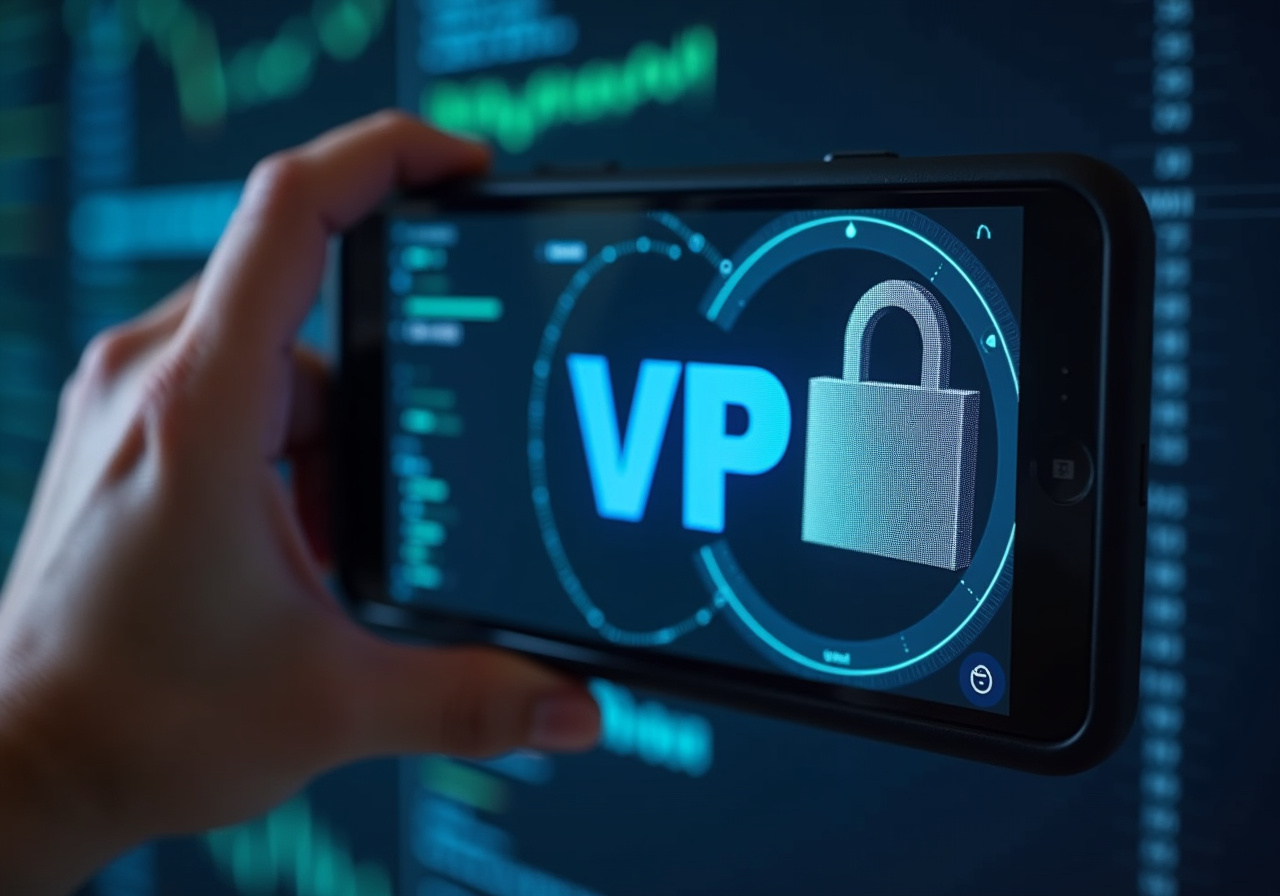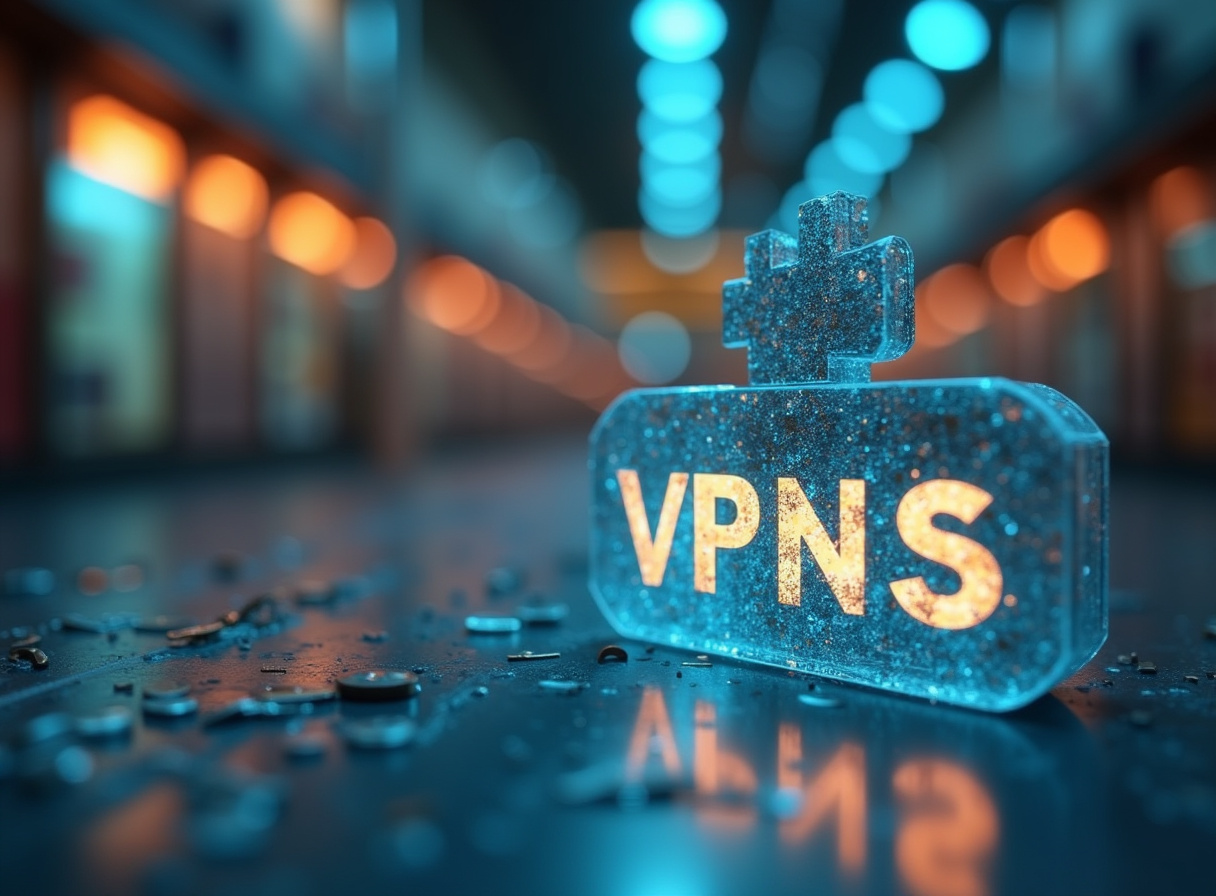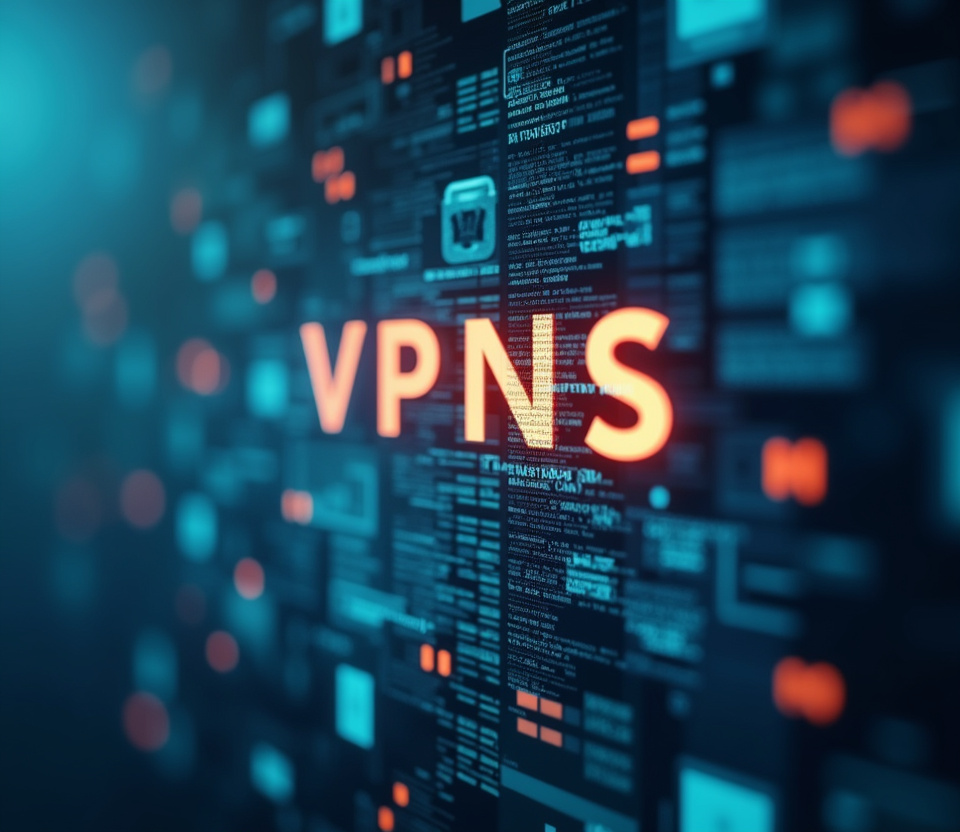VPNs for Wildlife Monitoring: Securing Tracking Data
Table of Contents
The Imperative of Tracking Data Security in Wildlife Monitoring
The escalating biodiversity crisis and the urgent need for effective conservation strategies have propelled wildlife monitoring into the forefront of environmental protection efforts. Sophisticated technologies, including GPS trackers, camera traps, and acoustic sensors, are now indispensable tools for gathering crucial data on animal behavior, population dynamics, and habitat use. However, the very act of collecting and transmitting this sensitive ecological information introduces significant vulnerabilities, making tracking data security a paramount concern.
A compromised dataset, whether through malicious intent or simple negligence, can undermine conservation efforts, expose endangered species to poachers, or provide misleading information that leads to misguided policy decisions. It is therefore imperative to adopt robust security measures that safeguard the integrity and confidentiality of wildlife monitoring data. A Virtual Private Network (VPN) emerges as a powerful tool in this context, offering a secure and encrypted channel for transmitting data from remote field locations to central databases.
By creating a secure tunnel that shields data from unauthorized access, VPNs play a vital role in preserving the accuracy, reliability, and privacy of information vital for environmental protection. Understanding the specific security challenges inherent in wildlife monitoring programs, and how VPNs can effectively address them, is critical for ensuring the long-term success of conservation initiatives. The vast and often remote environments in which wildlife monitoring takes place pose unique logistical challenges, demanding solutions that are both robust and adaptable.
Researchers and conservationists routinely collect data from geographically dispersed locations, often relying on mobile networks or satellite connections that may be inherently insecure. This presents a fragmented security landscape, where each point of data transmission becomes a potential point of vulnerability regarding wildlife monitoring VPN strategies. Implementing a comprehensive wildlife monitoring VPN strategy requires careful consideration of these complexities, tailoring the solution to the specific needs and constraints of each individual project.
The first step involves identifying potential threats, such as data interception, unauthorized access to tracking devices, and vulnerability of data storage systems. Imagine a scenario where sensitive GPS coordinates of a critically endangered rhino population are intercepted. Poachers could exploit this information to locate and harm these animals, rendering years of conservation work futile.
Similarly, compromising camera trap images could reveal migration patterns or nesting sites, providing valuable information to illegal wildlife traders. The potential consequences of a data breach are far-reaching and can have devastating impacts on vulnerable species and their ecosystems. Once these risks are clearly defined, appropriate security protocols can be implemented, including strong encryption algorithms, multi-factor authentication, and regular security audits.
Utilizing a robust wildlife monitoring VPN alongside additional layers of security, such as secure data storage practices, provides a multi-faceted defense against potential threats, ensuring data integrity and confidentiality. A well-configured VPN, coupled with secure data management practices, provides a robust defense against these threats, ensuring that wildlife tracking data remains protected throughout its lifecycle. This approach not only safeguards the data itself, but also strengthens public trust in conservation efforts, fostering greater collaboration and support for environmental protection initiatives.
The public is more likely to support conservation efforts if they are confident that sensitive data is being handled responsibly and securely. Transparency in data security practices can build trust and encourage greater participation in conservation initiatives. Furthermore, the increasing sophistication of cyberattacks and the growing value of environmental data necessitate a proactive and adaptive approach to security.
Wildlife monitoring organizations must remain vigilant and constantly update their security protocols to stay ahead of potential threats. This includes investing in cybersecurity training for personnel, implementing robust intrusion detection systems, and maintaining close collaboration with cybersecurity experts. Investing in cybersecurity training for personnel involved in all aspects of data collection, transmission, and storage is crucial.
Staff should be educated about common cyber threats, such as phishing attacks and malware, and trained on best practices for data security. Implementing robust intrusion detection systems that monitor network traffic for suspicious activity can provide early warnings of potential attacks, allowing for a prompt response. By embracing a culture of security awareness and continuous improvement, wildlife monitoring programs can effectively mitigate risks and ensure the long-term integrity of their data.
Ultimately, the success of conservation efforts depends on the ability to gather accurate and reliable information about the natural world. By prioritizing data security and adopting comprehensive security strategies such as wildlife monitoring VPN implementation, we can ensure that the data used to inform conservation decisions is both protected and trustworthy, contributing to greater environmental protection.
The core function of a VPN in the context of wildlife monitoring is to establish an encrypted connection between the data collection device (e.g., a GPS tracker, camera trap, or acoustic sensor) and the central data server. This encrypted channel ensures that any data transmitted is unreadable to unauthorized parties, such as hackers or eavesdroppers. The level of encryption is a critical factor to consider when selecting a wildlife monitoring VPN for conservation purposes.
Advanced Encryption Standard (AES) with a 256-bit key is widely considered the industry standard for strong encryption, providing a virtually unbreakable shield against brute-force attacks. Imagine attempting to crack an AES-256 encrypted message – the number of possible key combinations is astronomically high, rendering brute-force attacks practically impossible with current computing technology. It is essential to verify that the chosen VPN service supports AES-256 or an equivalent level of encryption.
Check the technical specifications and security policies of the VPN provider to confirm the encryption standards employed. Beyond encryption, a reliable VPN should also offer a range of security features designed to protect data integrity and prevent unauthorized access. These may include a kill switch, which automatically disconnects the internet connection if the VPN connection drops, preventing unencrypted data from being transmitted.
Consider a scenario where a researcher is transmitting GPS data from a remote field location using a satellite internet connection. If the VPN connection unexpectedly drops, the kill switch would immediately disconnect the internet, preventing the unencrypted GPS coordinates from being exposed. DNS leak protection ensures that DNS queries are routed through the VPN server, preventing third parties from tracking browsing activity.
Without DNS leak protection, your internet service provider (ISP) or other third parties could potentially monitor the websites and services you are accessing, even when connected to a VPN. IP address masking conceals the user's real IP address, making it more difficult to identify the location of the data collection device. By masking the IP address, wildlife monitoring organizations can protect the physical location of their researchers and equipment in the field, reducing the risk of theft or vandalism.
Crucially, the effectiveness of a VPN relies heavily on the integrity of the VPN provider itself. It is imperative to choose a provider with a strong reputation for security and privacy, and that supports VPN for conservation. Thoroughly research the provider's security practices, paying close attention to their logging policy.
A "no-logs" policy is essential, as it ensures that the provider does not collect or retain any information about user activity, including browsing history, IP addresses, or timestamps vital for tracking data security. This prevents the VPN provider from being compelled to hand over user data to third parties, even under legal pressure. Read the VPN provider's privacy policy carefully to understand what data they collect, how they store it, and with whom they share it.
Look for providers that clearly and transparently disclose their logging practices. Furthermore, consider the location of the VPN provider's headquarters. Jurisdictions with strong data protection laws and a commitment to privacy are generally preferable.
Avoid providers based in countries with surveillance-heavy governments or weak data protection regulations. Research the data privacy laws in the country where the VPN provider is headquartered to understand the level of protection afforded to user data. Independent audits and certifications can also provide valuable assurance of a wildlife monitoring VPN provider's security and privacy practices.
Look for providers that have undergone rigorous third-party audits to verify their compliance with industry best practices. These audits should assess the provider's infrastructure, security protocols, and logging policy. Check the VPN provider's website or documentation for information about independent audits and certifications.
In addition to technical security measures, it is equally important to implement robust access controls and authentication protocols to prevent unauthorized access to the VPN itself. Multi-factor authentication (MFA), which requires users to provide multiple forms of identification (e.g., password, security code sent to a mobile device), significantly enhances security by making it much more difficult for attackers to compromise accounts. Enable MFA for all VPN accounts to add an extra layer of security.
Regularly update VPN software and firmware to patch security vulnerabilities and ensure that the latest security features are enabled, preventing threats to data integrity. Implement a robust password policy that requires users to create strong, unique passwords and change them regularly. Avoid using easily guessable passwords or reusing passwords across multiple accounts.
Regular security audits and penetration testing can help identify weaknesses in the VPN configuration and infrastructure, allowing for prompt remediation. Engage cybersecurity professionals to conduct regular security assessments of your VPN infrastructure.
Data integrity is a cornerstone of reliable wildlife monitoring data, ensuring that the information collected accurately reflects the conditions in the field and has not been tampered with during transmission or storage. VPNs contribute significantly to wildlife data integrity by providing a secure and encrypted tunnel for data transmission, protecting it from interception and modification. Imagine a scenario where researchers are collecting acoustic data on bat populations in a remote forest.
This data is crucial for understanding bat behavior and habitat use, but it is also vulnerable to interception and manipulation. By using a VPN, the acoustic data is encrypted before being transmitted over the internet, ensuring that only authorized personnel with the decryption key can access and interpret it, supporting the data integrity objective. Beyond encryption, VPNs also help to maintain data integrity by preventing man-in-the-middle attacks, where an attacker intercepts communication between two parties and modifies the data being transmitted.
A VPN creates a direct and secure connection between the data collection device and the data server, bypassing potential intermediaries and reducing the risk of such attacks. Furthermore, VPNs can be configured to verify the integrity of transmitted data using cryptographic hash functions. These functions generate a unique "fingerprint" of the data, which can be used to detect any unauthorized modifications.
By comparing the hash value of the transmitted data with the original hash value, researchers can ensure that the data has not been altered during transmission, contributing strongly to tracking data security. In addition to protecting data during transmission, VPNs can also be used to secure data storage systems. By encrypting the data at rest, VPNs can prevent unauthorized access to sensitive information even if the storage system is compromised.
This is particularly important for wildlife monitoring organizations that store large amounts of data on local servers or in the cloud. Consider a situation where a wildlife monitoring organization stores camera trap images on a cloud storage service. If the cloud storage service is hacked, the camera trap images, which may contain sensitive information about endangered species, could be exposed.
By encrypting the camera trap images before they are uploaded to the cloud, the organization can ensure that the data remains protected even if the cloud storage service is compromised. Maintaining data integrity also involves implementing robust access controls and authentication protocols to prevent unauthorized access to data storage systems. VPNs can be configured to restrict access to specific data storage systems based on user roles and permissions.
For example, only authorized researchers may be granted access to sensitive GPS data, while other personnel may only have access to aggregated data for reporting purposes. Implementing multi-factor authentication (MFA) for access to data storage systems adds an extra layer of security, making it more difficult for attackers to compromise accounts and gain unauthorized access to data. Regular data backups are essential for maintaining data integrity.
In the event of data loss or corruption, backups can be used to restore the data to its original state. VPNs can be used to securely transmit data backups to offsite storage locations, protecting them from physical damage or theft. Furthermore, regular data integrity checks should be performed to identify any inconsistencies or errors in the data.
This can involve comparing data from different sources, verifying data against known standards, and conducting statistical analysis to identify outliers. Addressing any identified data integrity issues promptly is crucial to preventing further damage or loss of data. This may involve correcting errors, restoring data from backups, or implementing additional security measures to prevent future data breaches.
By implementing a comprehensive data integrity strategy that includes encryption, access controls, authentication protocols, data backups, and regular data integrity checks in alignment with securing tracking data, wildlife monitoring organizations can ensure that the information they collect and use is accurate, reliable, and trustworthy, contributing to more effective conservation efforts and bolstering environmental protection.
VPNs for Services: Enhancing Security for Online Platforms and Subscriptions
Environmental protection relies heavily on the accurate and secure collection and analysis of wildlife monitoring data. The insights gained from this data inform conservation strategies, policy decisions, and resource allocation. Compromised data can lead to misguided efforts, ineffective policies, and ultimately, harm to the environment and wildlife populations.
A wildlife monitoring VPN is therefore an essential tool for ensuring the integrity and reliability of the data used to make these critical decisions. Consider the scenario where a conservation organization is using GPS tracking data to identify critical habitat areas for a threatened species. If the GPS data is inaccurate or has been tampered with, the organization may misidentify the critical habitat areas, leading to the species' further decline.
Similarly, if camera trap images are altered to exaggerate the abundance of a particular species, policymakers may make decisions that are not based on reality, potentially diverting resources away from more pressing conservation needs. The use of VPNs in this context ensures that the data is transmitted securely and cannot be altered or intercepted by malicious actors, bolstering environmental protection. Furthermore, a wildlife monitoring VPN helps to protect the privacy of sensitive environmental information.
Wildlife monitoring data often contains details about the location of endangered species, their breeding sites, and their movement patterns. This information, if made public, could be exploited by poachers or illegal wildlife traders. A VPN can prevent unauthorized access to this sensitive data, protecting vulnerable species from harm.
Imagine a situation where a researcher discovers a new nesting site for a critically endangered bird species. This information is highly sensitive, as poachers could target the nesting site to steal eggs or chicks. By using a VPN to transmit and store the location of the nesting site, the researcher can protect this information from falling into the wrong hands, offering this endangered species a better chance of survival.
In addition to protecting species from harm, VPNs also help to protect the environment from damage. Wildlife monitoring data is often used to assess the impacts of human activities on the environment, such as logging, mining, and agriculture. If this data is inaccurate or has been tampered with, it could lead to ineffective environmental regulations or policies, resulting in further environmental degradation.
The key components of VPN for conservation implementation involves several strategic steps. The first step is to conduct a thorough risk assessment to identify potential threats to wildlife monitoring data. This includes assessing the vulnerabilities of data collection devices, transmission networks, and storage systems.
The second step is to select a VPN provider that offers a strong level of security and privacy. This involves researching the provider's encryption standards, logging policies, and jurisdictional location. The third step is to configure the VPN properly to ensure that all data is transmitted securely.
This includes enabling the kill switch, DNS leak protection, and IP address masking. The fourth step is to implement robust access controls and authentication protocols to prevent unauthorized access to the VPN. This includes using multi-factor authentication and regularly updating passwords.
The fifth step is to provide cybersecurity training to all personnel involved in wildlife monitoring, including field researchers, data analysts, and IT staff. This training should cover topics such as phishing awareness, password security, and data handling best practices. The sixth step in the wildlife monitoring VPN implementation strategy is to conduct regular security audits and penetration testing to identify any weaknesses in the VPN configuration or infrastructure.
Finally, remain vigilant and adaptable, staying abreast of emerging cyber threats and updating security protocols accordingly. By prioritizing data security and implementing a comprehensive VPN strategy, wildlife monitoring organizations can ensure that the data they use to inform conservation decisions is accurate, reliable, and protected, contributing to more effective environmental protection and safer wildlife. Furthermore, open-source VPN solutions, while requiring more technical expertise to set up and maintain, offer greater transparency and control over security features.
By carefully considering the security implications of data collection and transmission, wildlife monitoring organizations can minimize risk and ensure that their data is used for conservation purposes and environmental protection.
Future Trends: AI, Blockchain, and the Evolution of VPNs in Subscription Services
In conclusion, the integration of VPN technology within wildlife monitoring programs is not merely a suggestion, but a necessity for ensuring tracking data security in the modern age. The digital landscape presents numerous vulnerabilities that can compromise sensitive data, undermining conservation efforts and potentially endangering wildlife populations. By implementing a robust VPN strategy alongside complementary security measures, organizations can effectively mitigate these risks and maintain the integrity of their data, which is paramount for effective environmental protection.
The benefits of employing a wildlife monitoring VPN extend beyond simply encrypting data. It fosters a culture of security awareness within the organization, empowering personnel to make informed decisions about data handling and online safety. This proactive approach is crucial for staying ahead of evolving cyber threats and ensuring the long-term effectiveness of conservation initiatives.
However, the successful implementation of a VPN strategy requires careful planning and ongoing maintenance. Organizations must conduct thorough risk assessments to identify specific vulnerabilities within their workflows. This includes evaluating the security of data collection devices, transmission networks, and storage systems.
Based on this assessment, organizations can select a VPN provider that meets their specific security needs and budget constraints. The configuration of the VPN is equally important. Organizations must ensure that all relevant security features are enabled, such as the kill switch, DNS leak protection, and IP address masking.
Access controls should be implemented to restrict access to sensitive data based on user roles and permissions. Regular security audits and penetration testing can help identify any weaknesses in the VPN configuration, allowing for prompt remediation. The human element is also critical.
Organizations must invest in cybersecurity training for all personnel involved in wildlife monitoring. This training should cover topics such as phishing awareness, password security, and data handling best practices. By empowering staff to recognize and avoid cyber threats, organizations can significantly reduce the risk of data breaches.
Looking ahead, the role of VPNs in wildlife monitoring is likely to become even more critical. As technology advances and cyber threats become more sophisticated, the need for robust data security measures will only increase. Emerging technologies, such as the Internet of Things (IoT) and artificial intelligence (AI), are creating new opportunities for wildlife monitoring, but they also introduce new security challenges.
IoT devices, such as sensor networks and automated cameras, can generate vast amounts of data, but they are often vulnerable to hacking. AI algorithms can be used to analyze wildlife monitoring data, but they can also be exploited by malicious actors to manipulate data or launch targeted attacks. To address these challenges, wildlife monitoring organizations must adopt a proactive and adaptive approach to security, embracing new technologies while remaining vigilant about potential risks.
This includes exploring the use of advanced security features, such as blockchain technology and homomorphic encryption, to further protect data integrity and confidentiality. Furthermore, collaboration and information sharing among wildlife monitoring organizations are essential for staying ahead of evolving cyber threats. By sharing threat intelligence and best practices, organizations can collectively strengthen their defenses and protect vital conservation data.
In conclusion, securing tracking data is not just about protecting information; it's about safeguarding the future of our planet and its incredible biodiversity. By embracing VPN technology and fostering a culture of security awareness, wildlife monitoring organizations can ensure that their data is used effectively to inform conservation strategies, protect endangered species, and promote environmental protection, creating a more sustainable future for all. The implementation of a wildlife monitoring VPN, therefore, represents a critical investment in data integrity, environmental preservation, and the long-term success of conservation initiatives.
It’s a proactive step that acknowledges the evolving digital landscape and ensures that efforts to protect our planet are not compromised by preventable security breaches.
Stay Updated
Get the latest VPN news, tips, and exclusive deals to your inbox.




